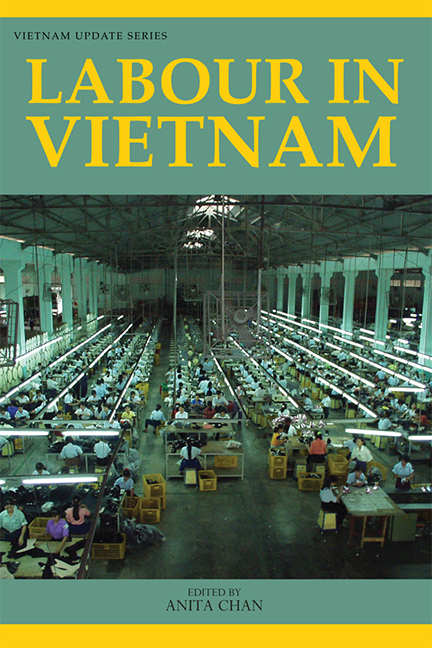Book contents
- Frontmatter
- Contents
- List of Tables and Figures
- Abbreviations
- Acknowledgements
- The Contributors
- 1 Introduction
- 2 “Awakening the Conscience of the Masses”: The Vietnamese Confederation of Labour 1947–75
- 3 State Enterprise Workers: “Masters” or “Commodities”?
- 4 The Redivision of Labour in a Red River Delta Village in a Globalized Economy
- 5 Corporate Social Responsibility in Socialist Vietnam: Implementation, Challenges, and Local Solutions
- 6 Workers' Protests in Contemporary Vietnam
- 7 Strikes in Vietnam and China in Taiwanese-owned Factories: Diverging Industrial Relations Patterns
- 8 The Dynamics of a Multinational Factory Regime and Recent Strikes in Vietnam
- 9 How Does Enterprise Ownership Matter? Labour Conditions in Fashion and Footwear Factories in Southern Vietnam
- 10 Exploitative Recruitment Processes and Working Conditions of Vietnamese Migrant Workers in Taiwan
- Index
8 - The Dynamics of a Multinational Factory Regime and Recent Strikes in Vietnam
Published online by Cambridge University Press: 21 October 2015
- Frontmatter
- Contents
- List of Tables and Figures
- Abbreviations
- Acknowledgements
- The Contributors
- 1 Introduction
- 2 “Awakening the Conscience of the Masses”: The Vietnamese Confederation of Labour 1947–75
- 3 State Enterprise Workers: “Masters” or “Commodities”?
- 4 The Redivision of Labour in a Red River Delta Village in a Globalized Economy
- 5 Corporate Social Responsibility in Socialist Vietnam: Implementation, Challenges, and Local Solutions
- 6 Workers' Protests in Contemporary Vietnam
- 7 Strikes in Vietnam and China in Taiwanese-owned Factories: Diverging Industrial Relations Patterns
- 8 The Dynamics of a Multinational Factory Regime and Recent Strikes in Vietnam
- 9 How Does Enterprise Ownership Matter? Labour Conditions in Fashion and Footwear Factories in Southern Vietnam
- 10 Exploitative Recruitment Processes and Working Conditions of Vietnamese Migrant Workers in Taiwan
- Index
Summary
“Just as the abandonment of the working class proceeds from the fact of rather than reason for its passivity, so the embrace of social movements often stems from the fact of rather than the reason for their struggles.”
(Michael Burawoy 1985, p. 9)In the summer of 2008, Ho Chi Minh City (HCMC) and adjacent Dong Nai Province in south Vietnam were experiencing an unprecedented proliferation of labour conflicts. One trade union leader in HCMC remarked, “this is the most chaotic change in labour–management relations since Doi Moi”. In the last week of July 2008, at least thirty factories in Dong Nai Province alone were undergoing strikes, while many factories in the industrial zones (IZs) and Export Processing Zones (EPZs) in the greater HCMC area, such as Bien Hoa I, Bien Hoa II, Long Thanh, and Linh Trung, had experienced labour disputes. The strikes were mainly in foreign-invested multinational factories and aimed at commercial or production disruption to protest low wages. Although they were illegal, the strikes were nonviolent and peacefully resolved.
To understand the nature of current labour–management conflicts and strikes, this chapter attempts to analyze the process of empowerment and disempowerment of the workers at a micro level in one foreign-invested joint-venture factory. As Hansson (2003, p. 175) postulates, if “conflicts occur outside the formal structure of the partystate and are still dealt with in an ad hoc manner largely depending on the local power configuration where conflicts take place”, then we need to explore how that local power is configured. Another question is whether there are consistent structural characteristics behind the “ad hoc manner” in which labour–management conflicts are dealt with.
This study will focus on the history of a factory, SIL, that had been a joint-venture between a private Korean company and a Vietnamese state-owned corporation for sixteen years, and was recently sold to private Vietnamese owners.
- Type
- Chapter
- Information
- Labour in Vietnam , pp. 252 - 277Publisher: ISEAS–Yusof Ishak InstitutePrint publication year: 2011



